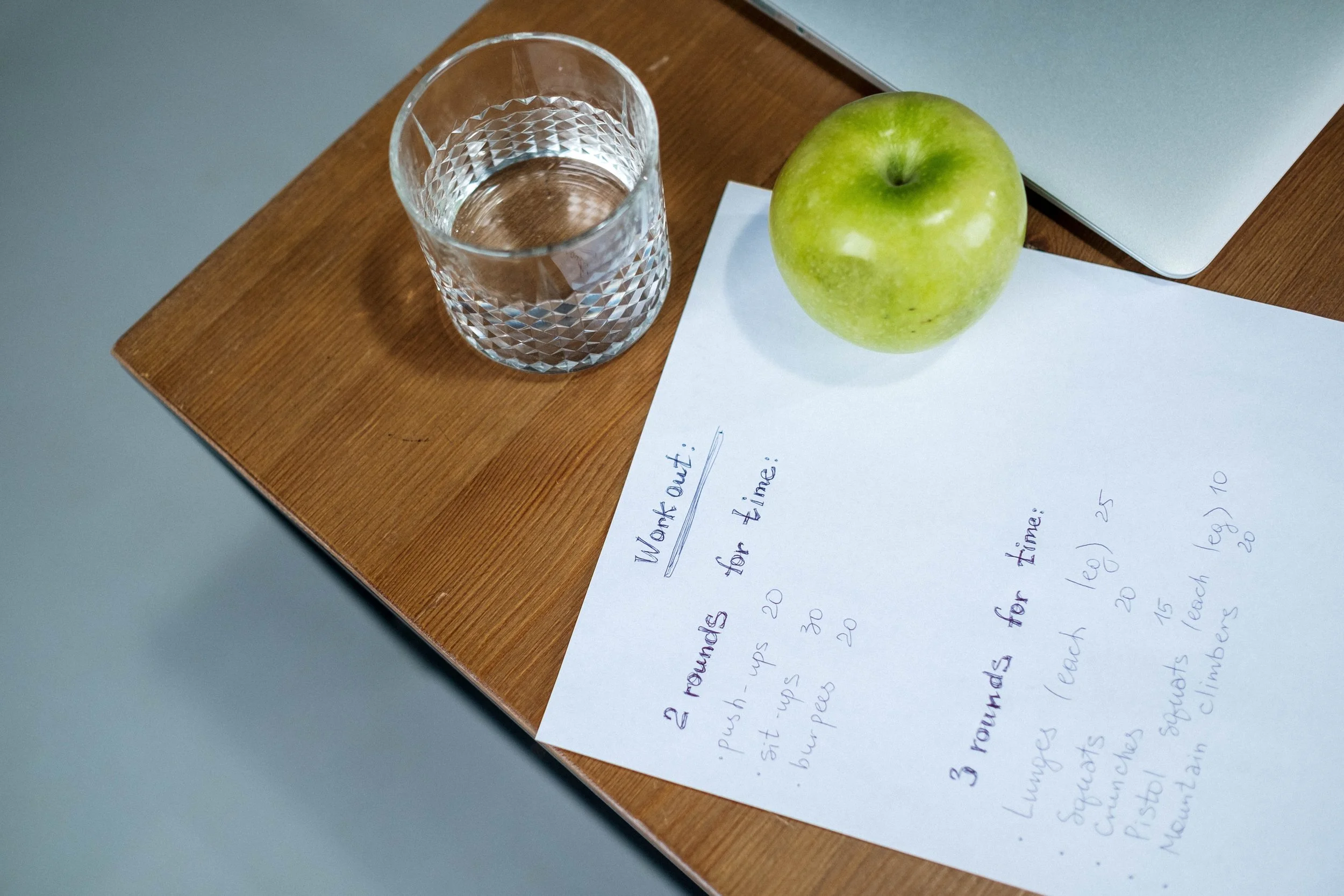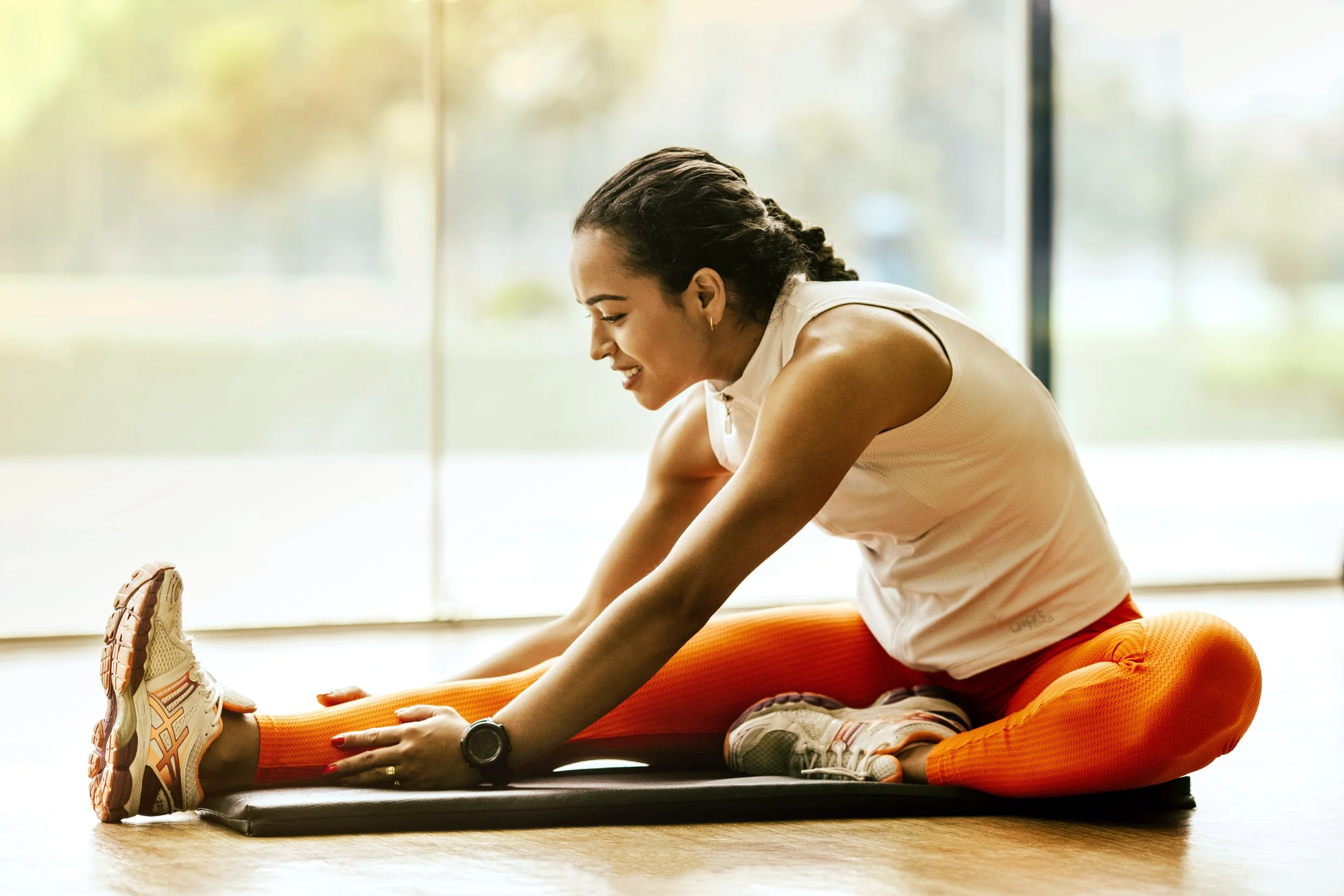How To Plan A Great Workout
Hiring a personal trainer isn’t for everyone, I get that. Perhaps you don’t want to fork out the money or don’t like the idea of a coach watching you as you train. Regardless, I aim to give all of my readers the tools you need in order to create your own effective session plans.
This post won’t make you a strength and conditioning expert, but it will let you get a little more out of your sessions and do so safely by incorporating warmups, stretches and cooldowns.
Warmup
A long and thorough warm-up never hurts, but 5 minutes is typically enough. It can be done with bodyweight exercises (think of jumping jacks or running on the spot) but a piece of cardio equipment is usually my go-to.
Start at an RPE of 3, work up to RPE 4 after a minute, and RPE 5 after another minute. Hold the intensity at 5 for the remaining 3 minutes.
Choose a piece of equipment relevant to the session ahead. For example, a cross trainer, rowing machine or assault bike (the ones with the moving handles) make for a better full-body warmup than a regular stationary bike which heavily focuses on blood flow to the muscles of the legs.
The purpose of a warmup is, as the title suggests, to increase muscle temperature. This is technically more of a byproduct, as the motions involved in the warmup exercise produce heat. This increased muscle temperature results in improved pliability, allowing the muscles to stretch to greater lengths without lasting damage.
The other benefits of a warmup include widening blood vessels (vasodilation), increasing heart rate and stroke volume (thus cardiac output increases), and breathing depth and frequency increases in order to improve oxygen delivery. All of these physiological changes begin to ramp up and prepare the body for the session that's about to begin.
Pre-Session Stretches
Following the warmup, dynamic stretches are best used before the main body of a session. Dynamic stretches are moving stretches, with examples including leg swings, arm circles and the “open and close the gate” hip movements that most football players will be familiar with.
Stretching the muscles results in them being able to stretch to greater lengths before suffering plastic deformation (stretching to a point that muscles don’t fully return to their original state). The reason for using dynamic stretches before a workout is to not only stretch but also prime the muscles ready for use.
Main Session Body
The main session of your session will vary depending on what your exact training goals are. Even with a single training goal, you will likely complete different kinds of sessions on different days.
Resistance training
If you’re only doing 1 or 2 resistance sessions per week, full body sessions are ideal. For 3+ sessions per week, it may be worth considering a push/pull/legs split or splitting your resistance training by muscle groups.
Within a resistance training session, it is important to order your exercises correctly. A general rule of thumb is to put the big lifts first. The big lifts are those where more weight is being moved and more joints are involved, classic examples being the “big 3” power lifts of Squats, deadlifts, and benchpress. Placing squats first in a session, for example, means that they are performed with minimal fatigue, allowing you to get the desired training adaptations.
Cardiovascular Training
Cardio can be broken down further by intensity along with other factors.
“Steady-state” continuous training is typically low intensity and long in duration, this may be using the exercise bike at an RPE of 6 for between 20 and 40 minutes, or longer (I usually need to pee by 40).
Interval training is another popular form of cardiovascular training. I’ve already published a post on the benefits of HIIT training. HIIT stands for High-Intensity Interval Training, it is often bursts of high-intensity exercise with rest periods dispersed throughout.
Cool down
It’s not ideal to just leave the gym straight after high-intensity exercise. There’s potential for blood to pool in large muscle groups such as the legs. Blood pooling in the lower extremities increases feelings of dizziness, nausea and vomiting. The purpose of a cool down is to return the body to a state of rest gradually.
An effective cooldown example can take 5 minutes and just be a reversal of the warmup example given earlier. Choose a piece of cardio equipment, start at an RPE of 5 or so, after a minute, drop down to RPE 4, then RPE 3 after another minute. Hold at RPE 3 for the remaining 3 minutes before coming to a gentle stop.
Finishing Stretches
We all know too well the soreness the day after a solid workout. This is called Delayed-Onset Muscle Soreness, or DOMS. One way of reducing DOMS is stretching after your workout. Static stretching is ideal post-workout. Repeated training without stretching will result in muscle shortening and a feeling of “stiffness”.
Hold the stretch at the point of discomfort, but not pain and hold for 10-15s for maintenance of muscle length. Holds of 30 seconds or longer, such as those often seen in yoga or dedicated mobility sessions, will result in increases in muscle lengths. Remember to place emphasis on stretching muscles that have been worked during that day's session (e.g. do more leg stretches after a leg day session).
Now Go Forth!
Hopefully, you’re now armed with all of the essentials to build your own session plans. For extra information, check out some of the other posts on this blog or get in touch with any questions, I don’t bite.
If you still need extra guidance, have a look at some of the coaching packages I offer. I’d love to work with you.


